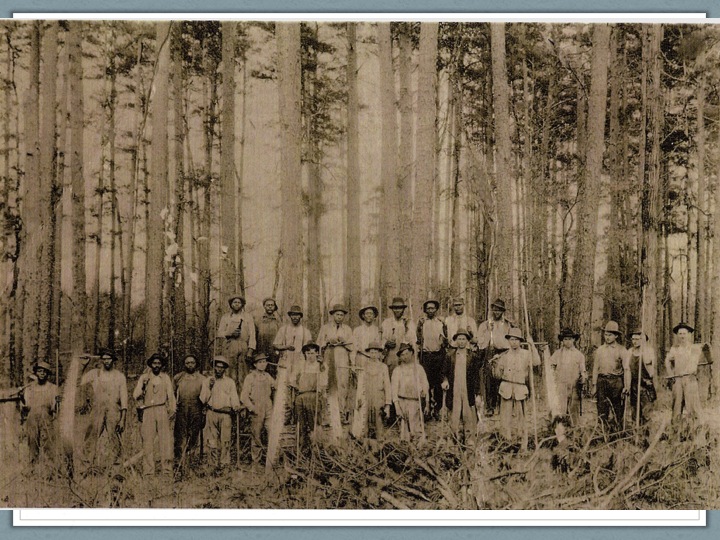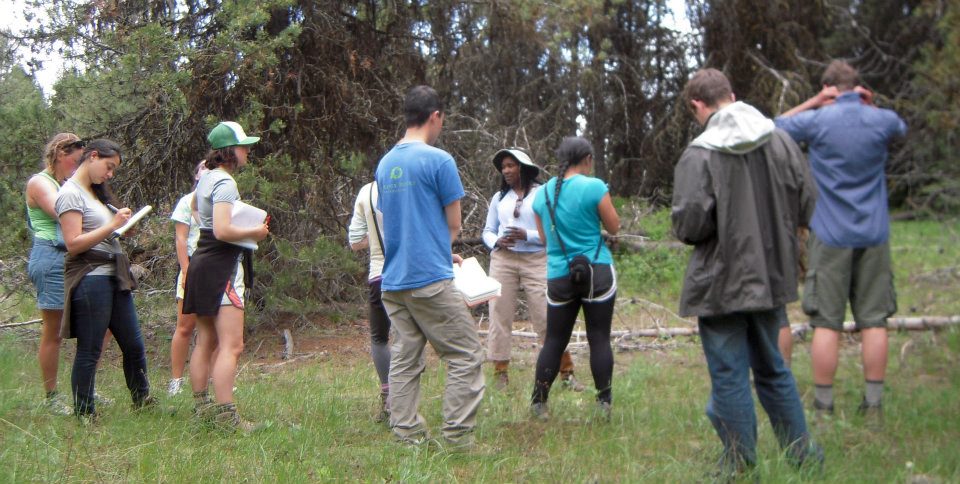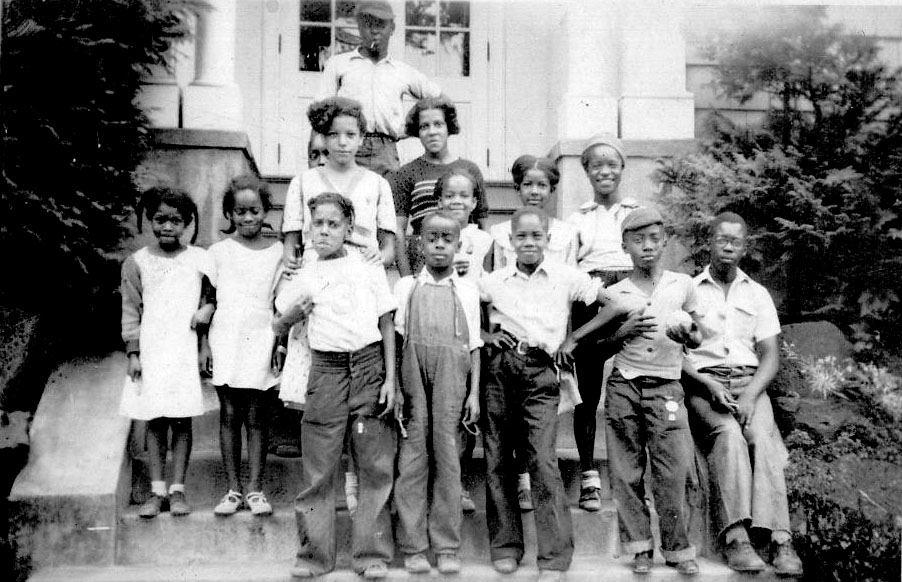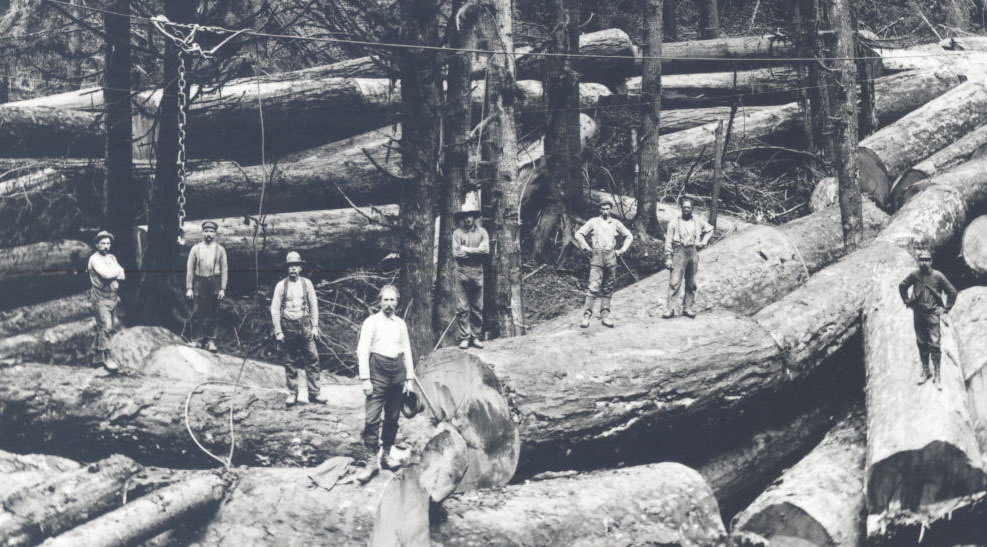Maxville, in northeast Oregon east of the town of Wallowa, was home to African American loggers at a time when Oregon’s constitution included a provision excluding Blacks from the state. Maxville had a population of about 400 residents, 40 to 60 of them African American. It was the largest town in Wallowa County between 1923 and 1933.
The Bowman-Hicks Lumber Company, based in Missouri, recruited experienced loggers from throughout the South and Midwest for the Maxville logging operation, and most of them traveled by rail—in boxcars—to Wallowa County. Initially, Logging Camp #5 housed the loggers near Wallowa. The company built a new town for the loggers and their families, both white and Black, at nearby Bishop’s Meadow. Originally named Mac’s Town, after Bowman-Hicks superintendent J.D. McMillan, the name was changed to Maxville.
Maxville was a railroad-logging town. Because trucks were not durable or large enough to profitably haul the large Ponderosa pine logs out of the forest, the felled trees were skidded, using steam engines, steam donkeys, and field horses. Workers also used elaborate timber chutes to move logs. Company jobs were typically segregated based on ethnic origin. Black workers felled the trees in teams, using cross-cut saws, and many had experience as log loaders, log cutters, railroad builders, tong hookers, and section foremen. In Maxville, the primary use of their expertise was log cutting, and there are firsthand accounts of Black workers repairing and maintaining the railroad engine. The Greek workers at Maxville had expertise in railroad building, and white workers worked as section foremen, tree toppers, saw filers, contract truck drivers, and bridge builders.
The town had a post office, medical dispensary, company store, hotel, horse barn, blacksmith, and roundhouse to turn the log-train engines. The buildings, manufactured at the local mill, were brought to Maxville by train on skids. Only one structure remains from that boom time—a large log building where the Bowman-Hicks Lumber Company ran the business. The building also served as a meeting place for residents of Maxville.
Maxville was mapped according to an often-used template, one that segregated residents by marital status and ethnicity. The town took this housing template a step further and segregated the schools, building a white school on one end of town and a Black school at the other. The town also had a swimming hole created by spring and natural land formation, a baseball field, and two baseball teams. Although the loggers worked in integrated teams for the company, the baseball teams were segregated except during regional tournaments. In the mid 1930s, the combined Maxville team provided a tournament win for Maxville in Elgin. Bowman-Hicks had a baseball club in its business model to provide an outlet for workers and to create a provisional desegregated workforce for a common goal.
The influx of timber workers and their families was a major economic boom for Wallowa County. Many of the surrounding homesteaders, ranchers, and shop owners worked as loggers and mill workers and provided local food and services to Maxville residents.
Economic conditions, especially the Great Depression and the consequent downturn in the lumber market, caused Maxville’s decline. When the logging operation ceased, Bowman-Hicks closed the town in 1933. Several of the African American families moved to Wallowa, some to La Grande, and some to Portland to work in the shipyards. During the downturn, jobs in janitorial services, railroad, blacksmith and mechanic work provided some employment opportunities. Other families migrated to California to continue work in the logging industry. Some loggers remained in Maxville to work as loggers until the mid 1940s, when a severe winter storm destroyed most of the remaining structures.
The Maxville Heritage Interpretive Center in Joseph, a nonprofit cultural organization, is engaged in uncovering, recording, and preserving the multicultural logging history of Maxville and the Pacific Northwest.
-
![Maxville residents at work]()
Maxville residents at work.
Maxville residents at work Courtesy Maxville Heritage Interpretive Center
-
![Maxville town site]()
Maxville town site.
Maxville town site Courtesy Maxville Heritage Interpretive Center
Related Entries
-
![Black People in Oregon]()
Black People in Oregon
Periodically, newspaper or magazine articles appear proclaiming amazeme…
-
![Timber Industry]()
Timber Industry
Since the 1880s, long before the mythical Paul Bunyan roamed the Northw…
Map This on the Oregon History WayFinder
The Oregon History Wayfinder is an interactive map that identifies significant places, people, and events in Oregon history.
Further Reading
"Oregon Experience: The Logger's Daughter." Oregon Public Broadcasting. Film, 2009.
Jones, William P. The Tribe of Black Ulysses: African American Lumber Workers in the Jim Crow South. Urbana-Champaign: U. of Illinois Press, 2005.
Barklow, Irene. School Days in the Wallowas. Enchantment Pub. of Oregon, 1992.




